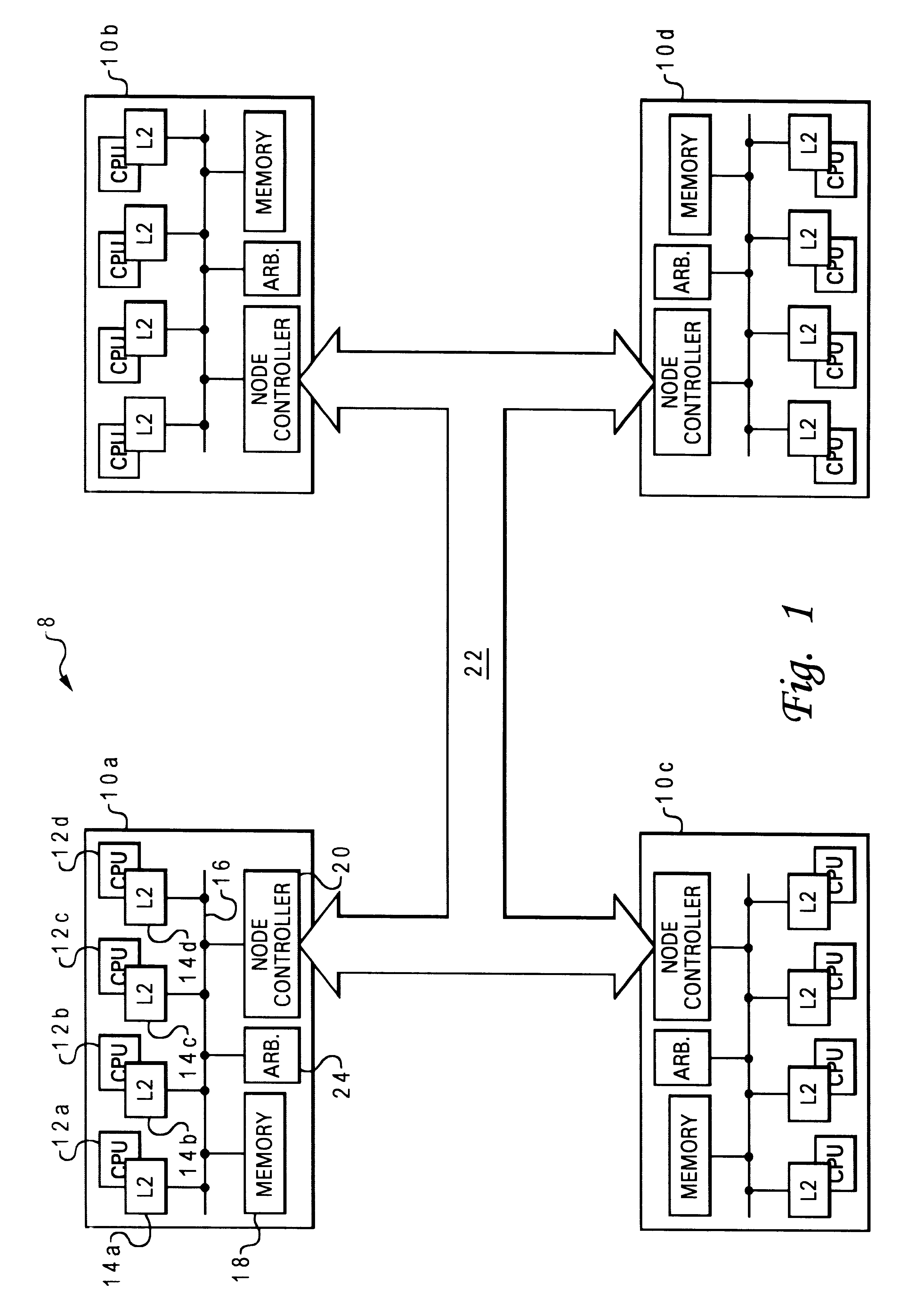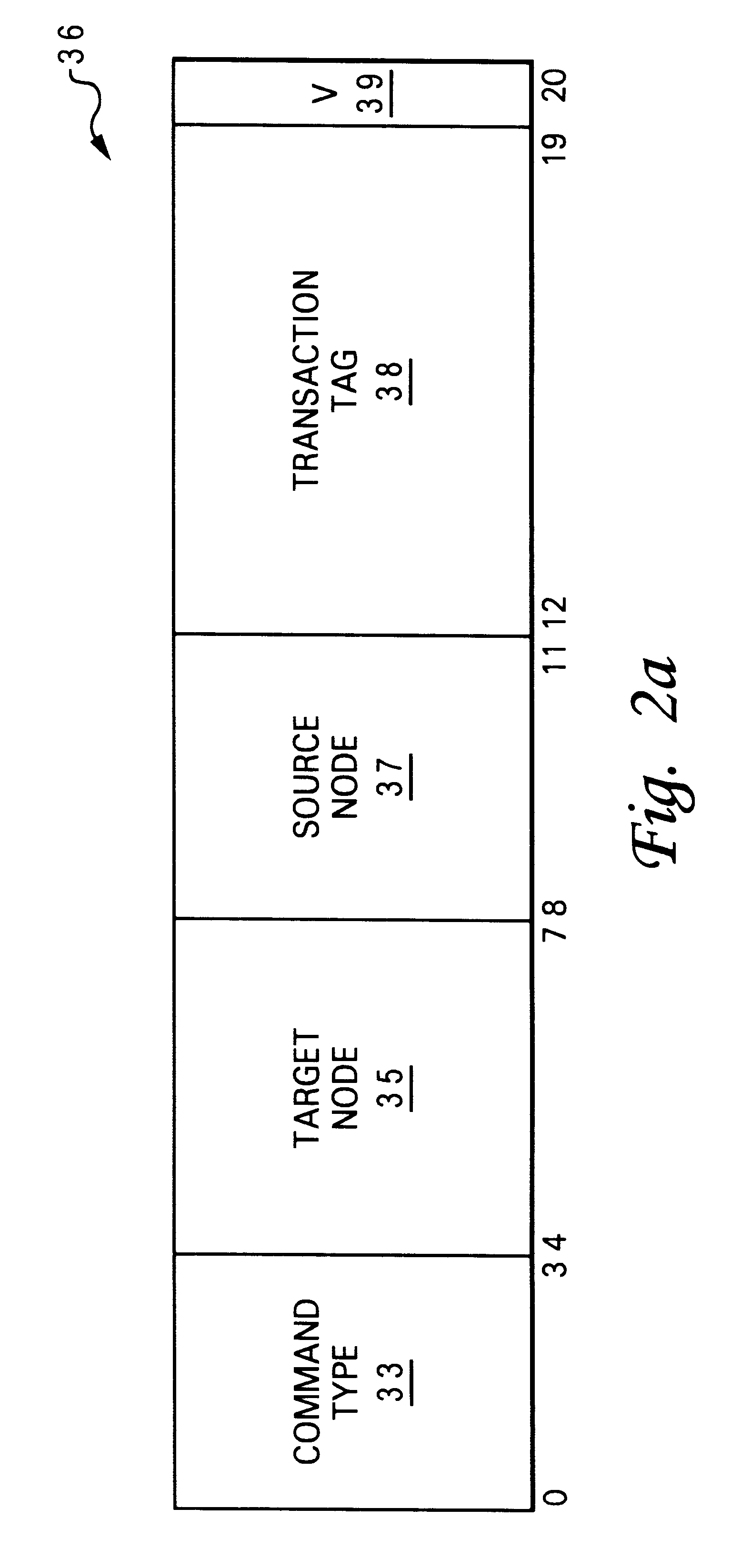Method and system for providing an eviction protocol within a non-uniform memory access system
a memory access system and protocol technology, applied in the field of data processing, can solve the problems of actual writeback of data to local memory, limited scalability and bandwidth of the smp topology overall, and the inability to provide a single eviction protocol for a sparse directory
- Summary
- Abstract
- Description
- Claims
- Application Information
AI Technical Summary
Problems solved by technology
Method used
Image
Examples
Embodiment Construction
I. Nums System
A. A. System Overview
Referring now to the drawings and in particular to FIG. 1, there is illustrated a block diagram of a non-uniform memory access (NUMA) computer system in accordance with a preferred embodiment of the present invention. The depicted embodiment can be realized, for example, as a workstation, server, or mainframe computer. As shown, NUMA computer system 8 includes a number (N) of processing nodes 10a-10d, which are interconnected by node interconnect 22. Processing nodes 10a-10d each include at least one, and up to M, processors 12. Processors 12a-12d are preferably identical and may comprise a processor within the PowerPC.TM. line of processors available from the International Business Machines (IBM) Corporation of Armonk, New York. In addition to the registers, instruction flow logic and execution units utilized to execute program instructions, each of processors 12a-12d also includes an on-chip level one (L1) cache (not shown), which together with a...
PUM
 Login to View More
Login to View More Abstract
Description
Claims
Application Information
 Login to View More
Login to View More - R&D
- Intellectual Property
- Life Sciences
- Materials
- Tech Scout
- Unparalleled Data Quality
- Higher Quality Content
- 60% Fewer Hallucinations
Browse by: Latest US Patents, China's latest patents, Technical Efficacy Thesaurus, Application Domain, Technology Topic, Popular Technical Reports.
© 2025 PatSnap. All rights reserved.Legal|Privacy policy|Modern Slavery Act Transparency Statement|Sitemap|About US| Contact US: help@patsnap.com



